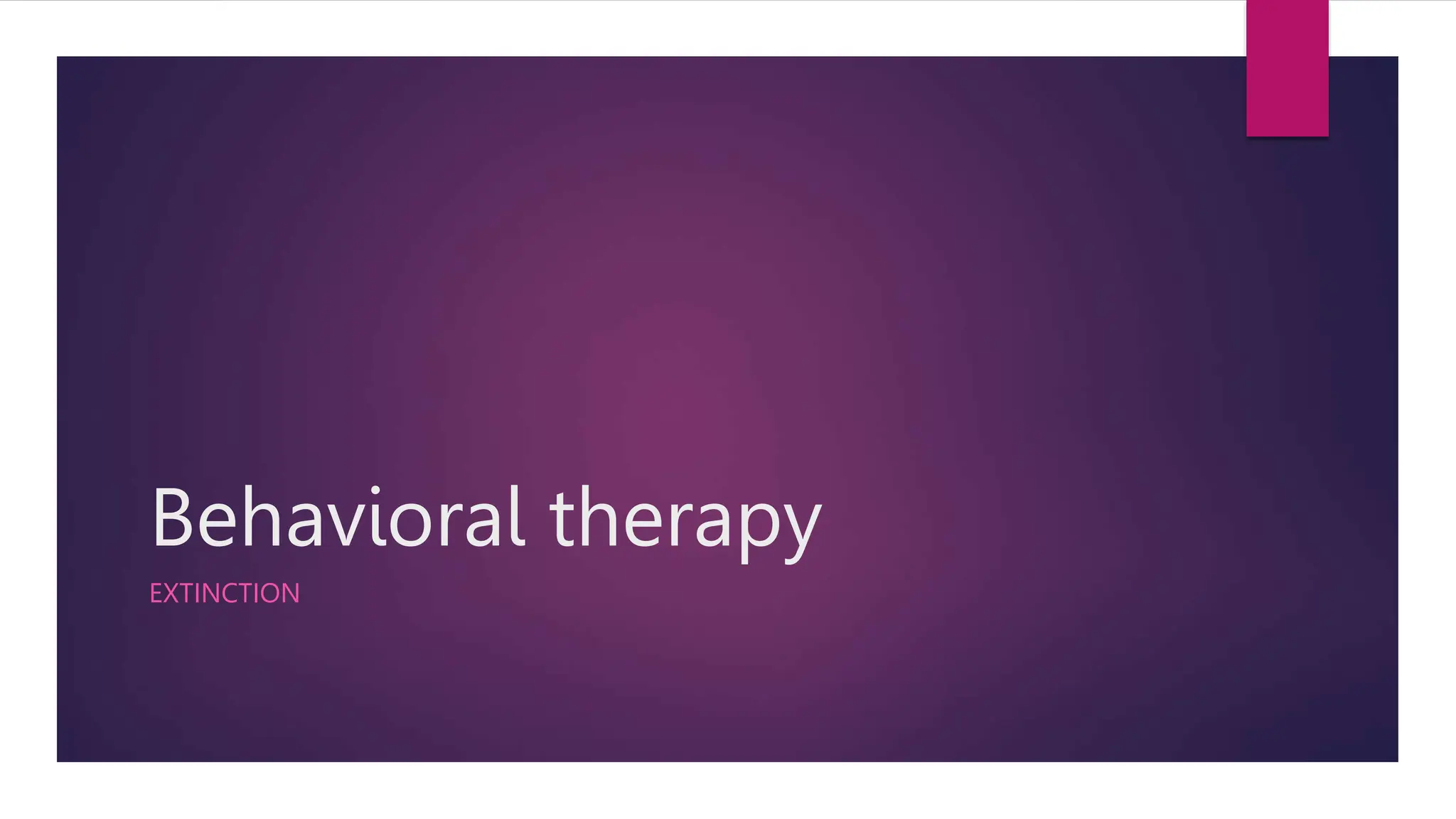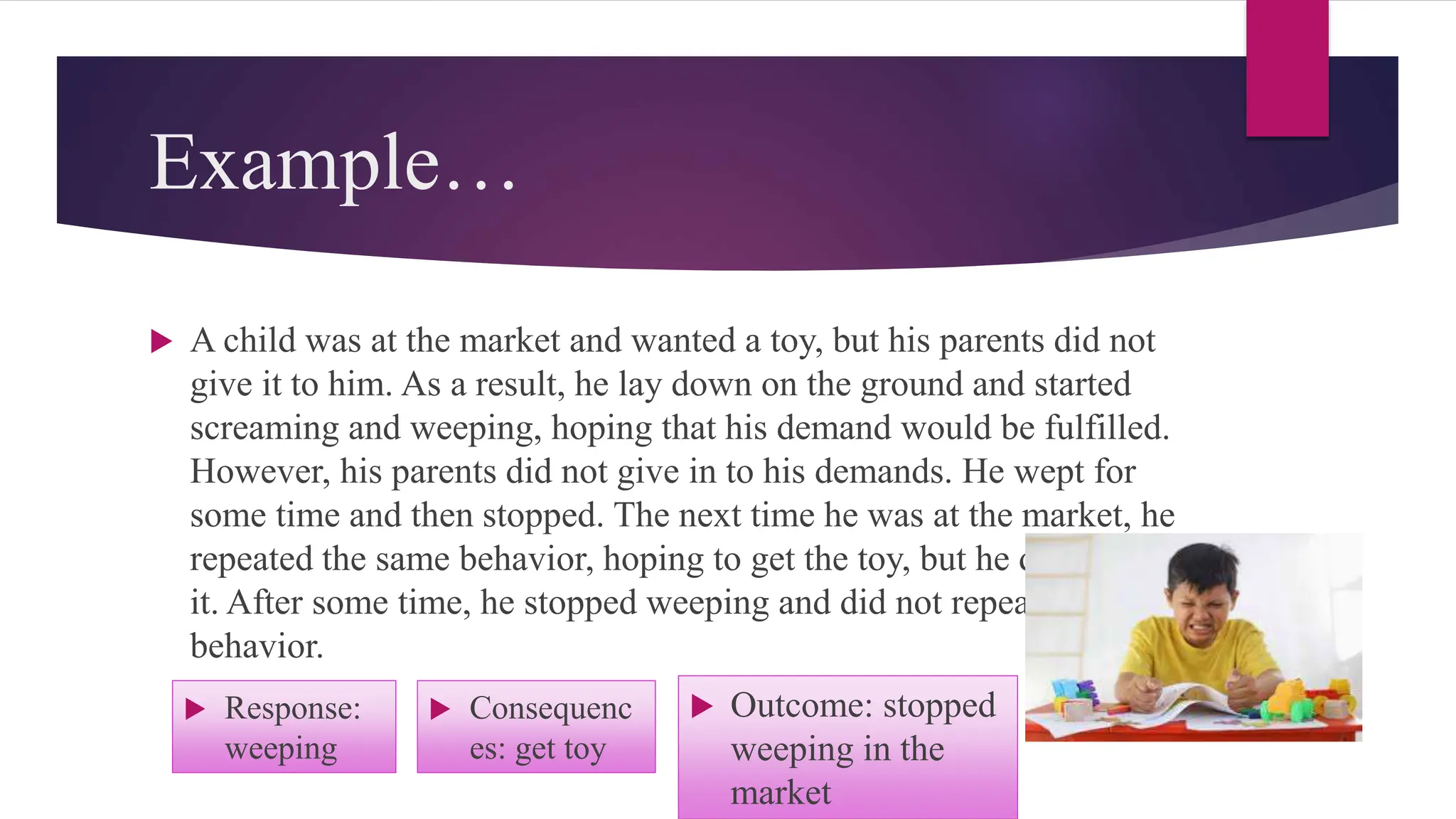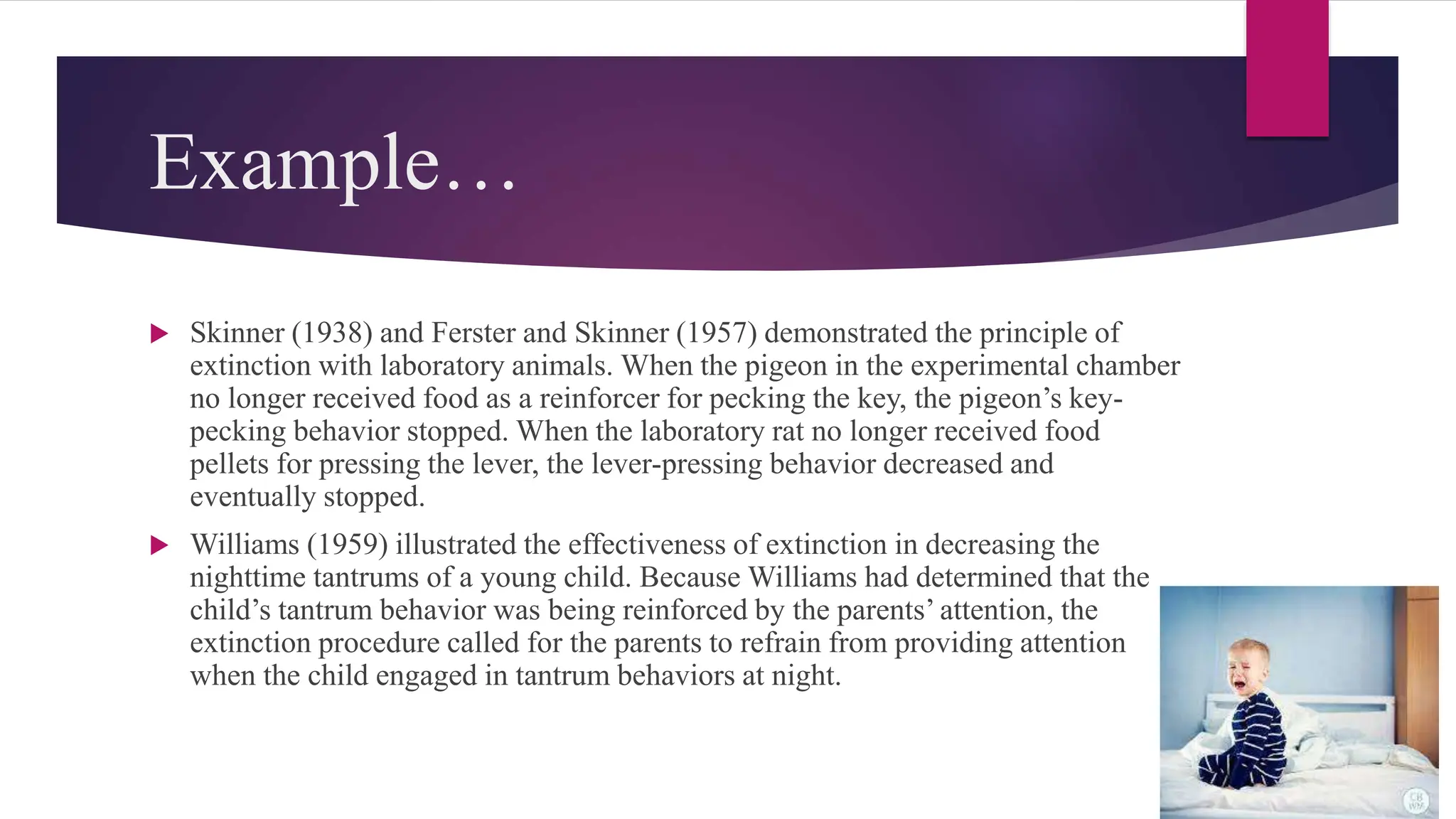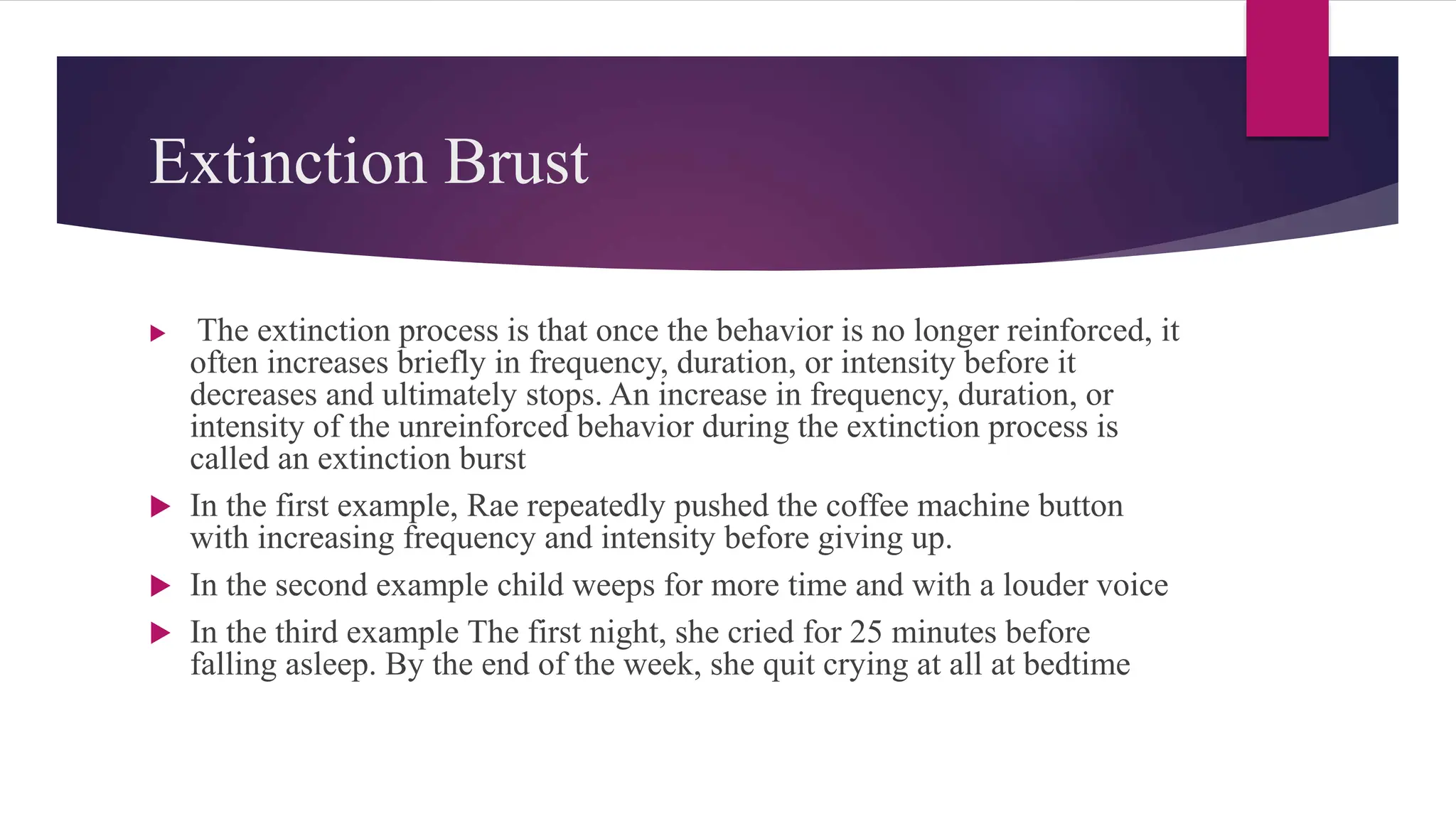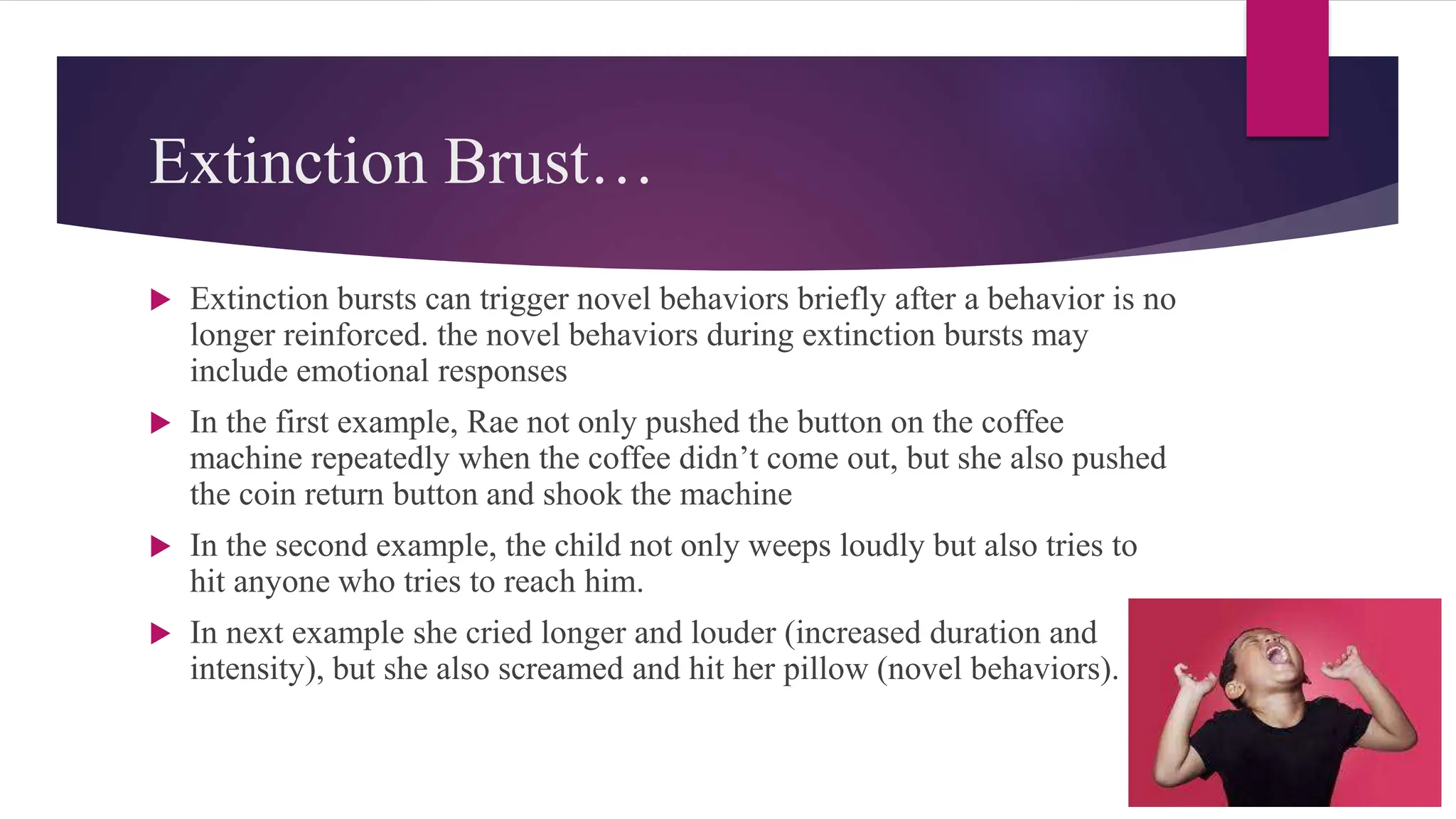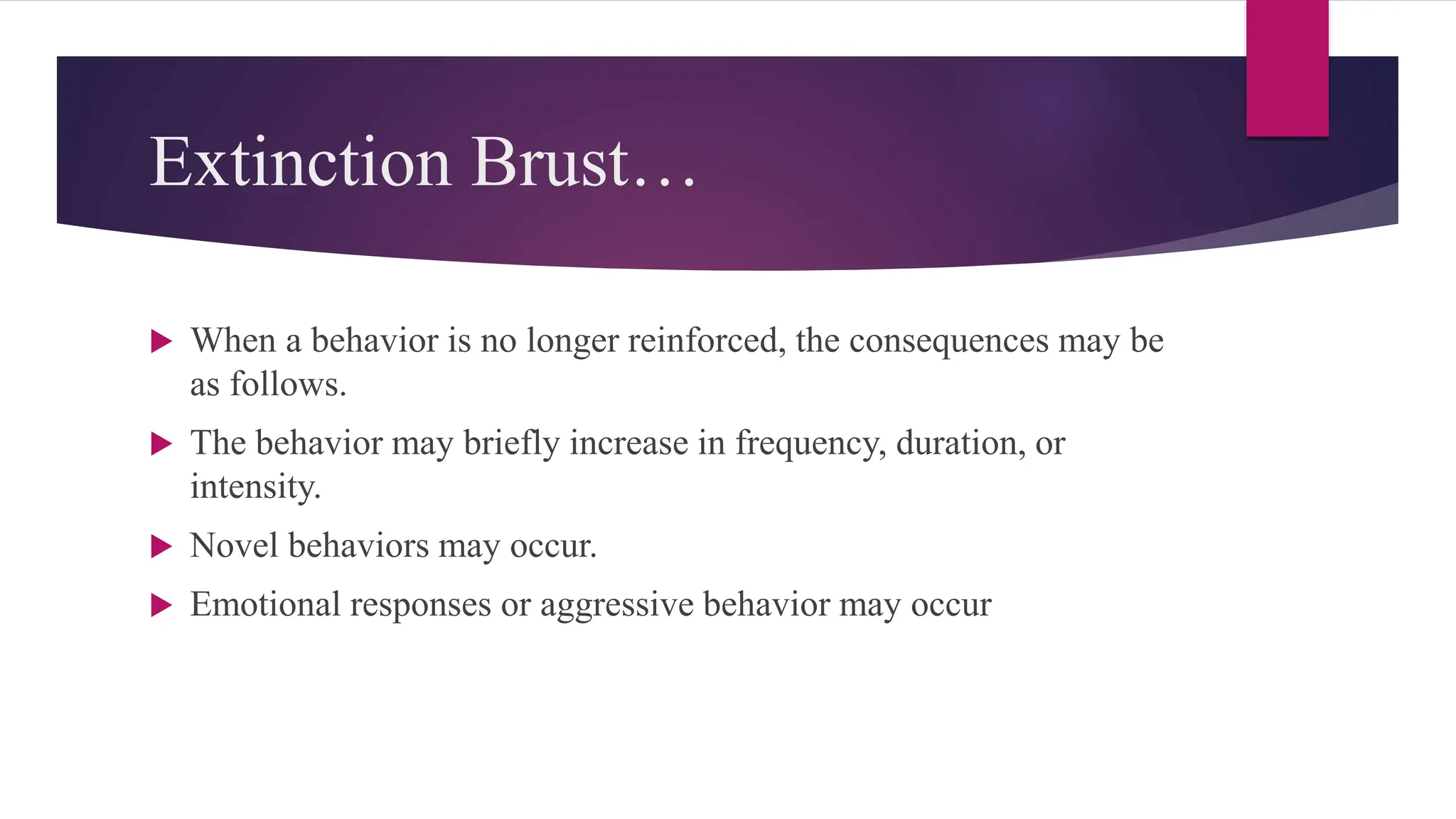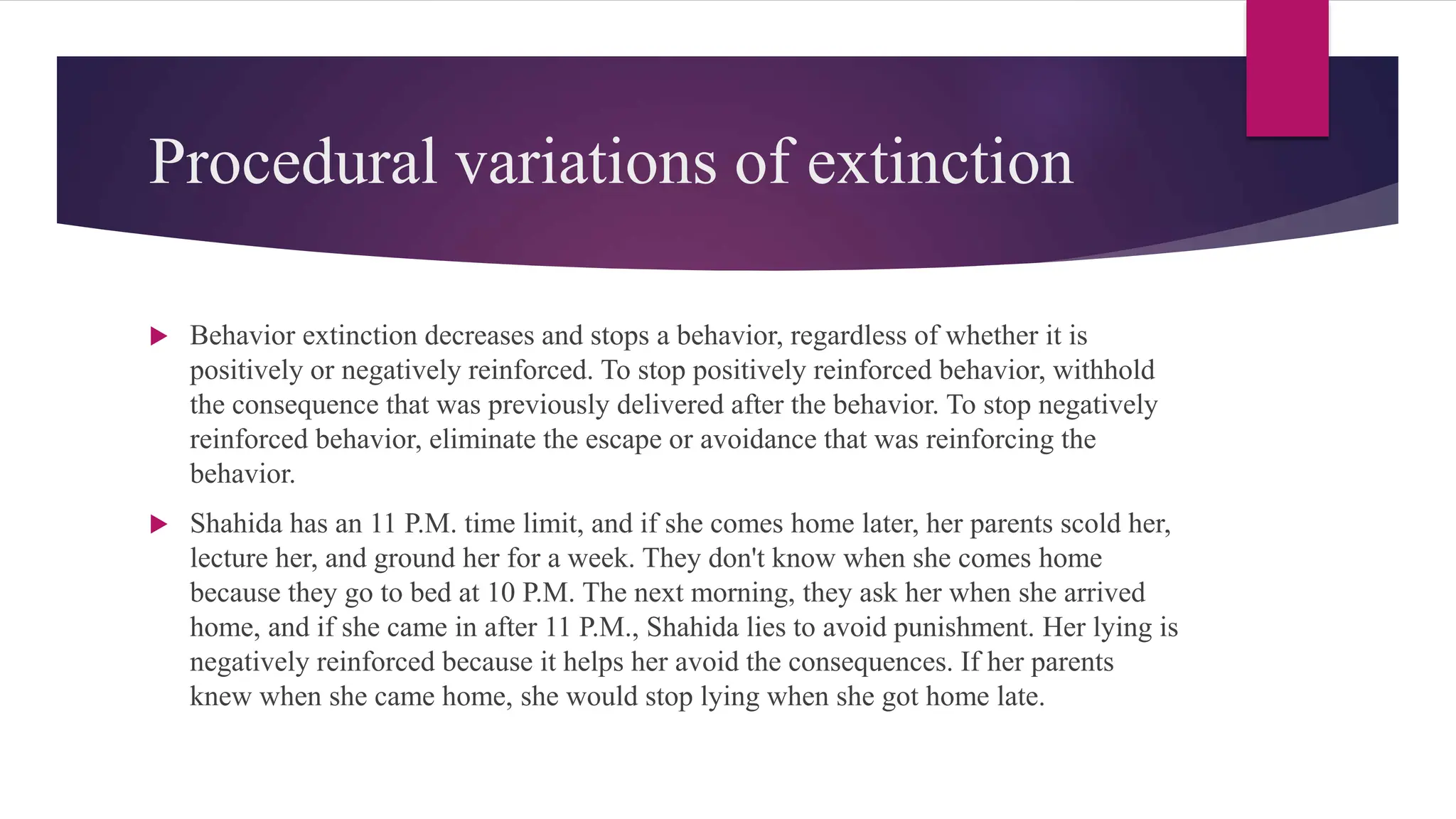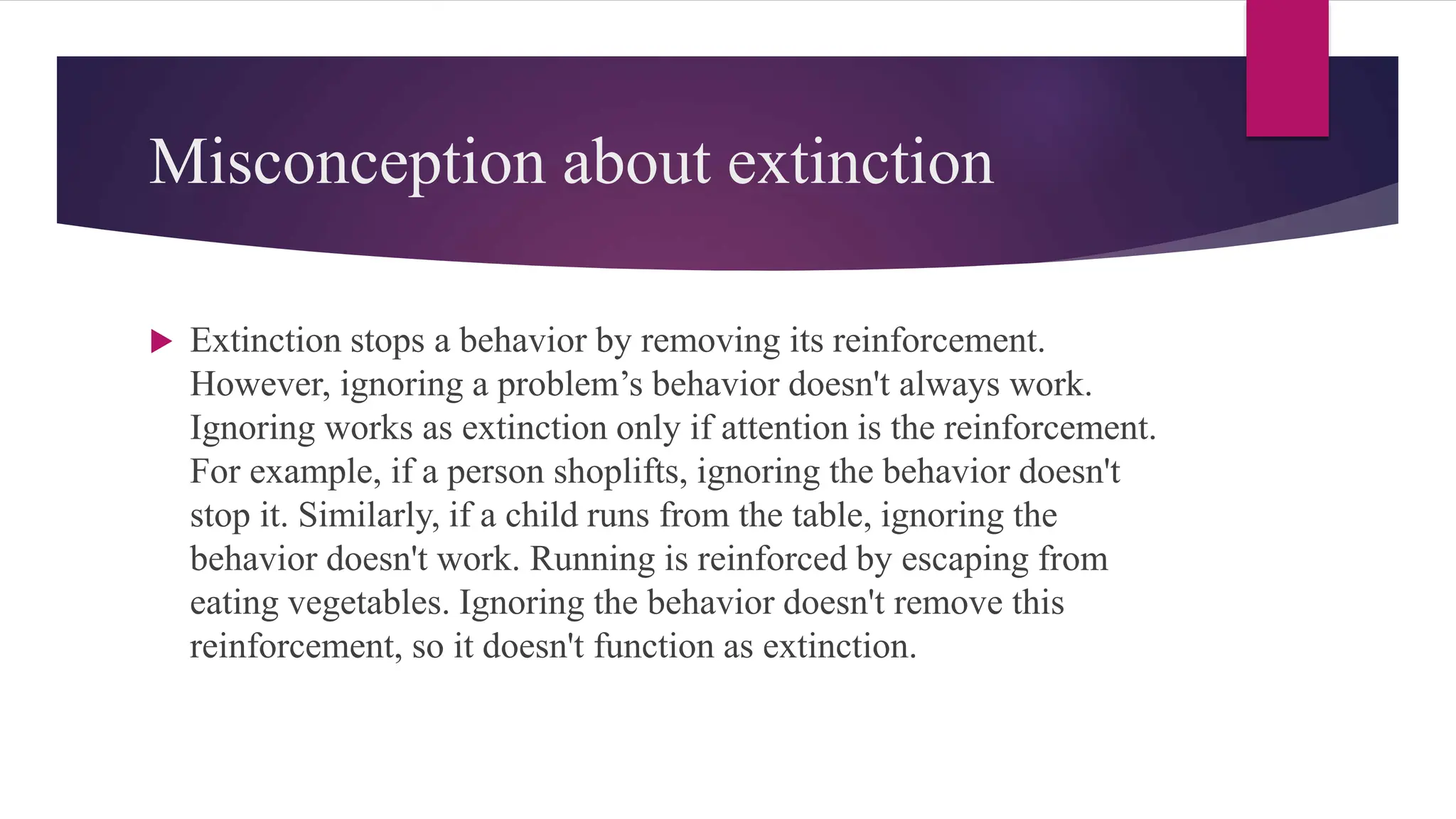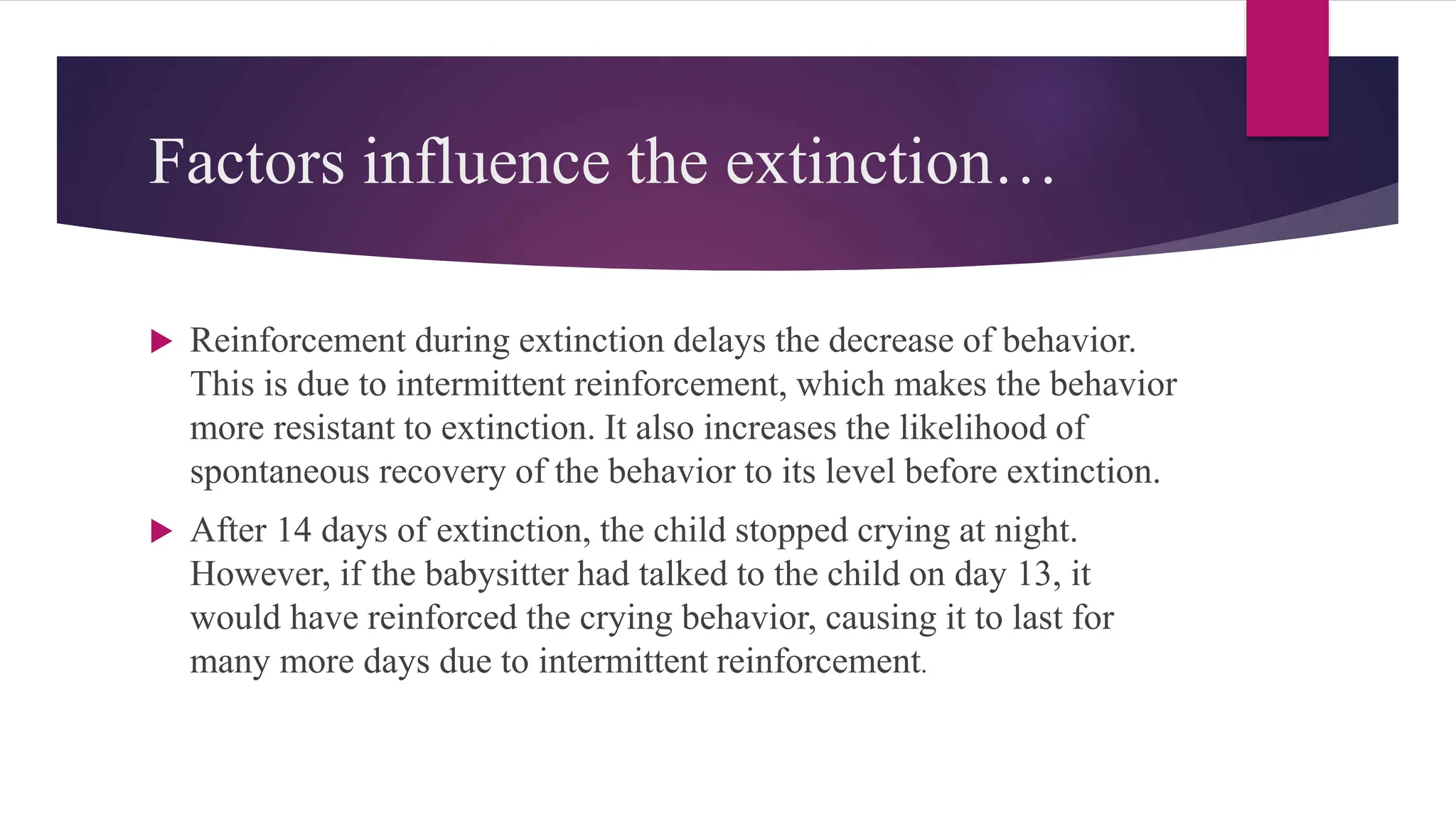Extinction is a behavioral therapy procedure in applied behavioral analysis aimed at decreasing negative behaviors by discontinuing reinforcement. The process often involves an initial increase in the behavior's frequency or intensity, known as an extinction burst, before it ultimately ceases. Factors like reinforcement schedules and potential reinforcement during extinction significantly influence the effectiveness of the extinction process.
